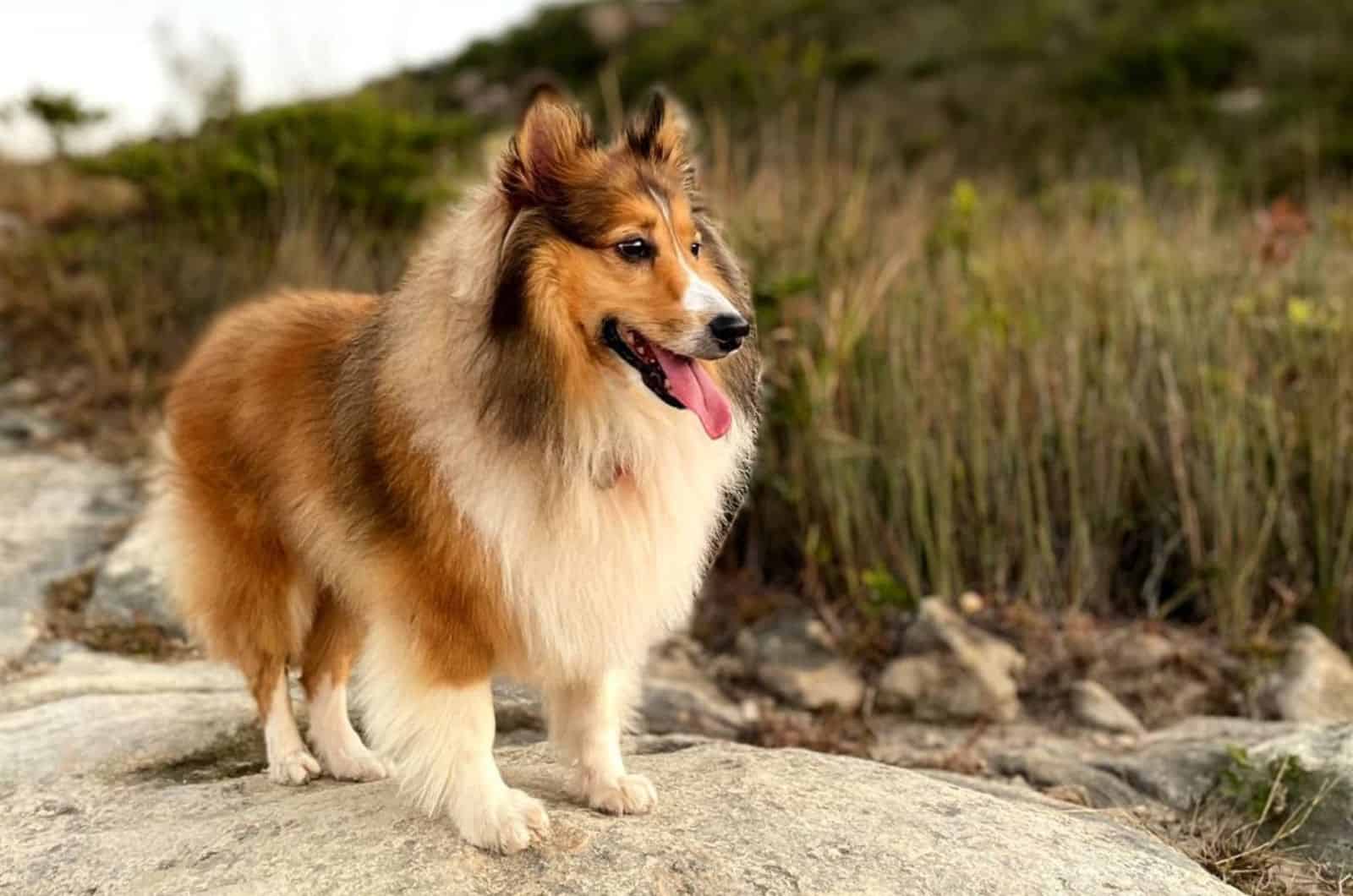The Mini Shetland Sheepdog, or Sheltie, is a highly clever, agile, and attentive working dog, native to Scotland’s isolated and inhospitable Shetland Islands.
This small dog of bright and clever eyes will be quick to become your best friend. They are utterly loyal, intelligent dogs that will be desperately waiting on your command.
Shelties, and their larger relative, the rough Collie, as well as the Border Collie, share a close family resemblance. A small, energetic, and nimble herding dog is the Shetland Sheepdog.
These family dogs are sensitive, loving, and very perceptive to the tone of their home. They enjoy barking, and have a tendency to be cautious of strangers, which seems to be two characteristics of a great watchdog.
What Is A Mini Shetland Sheepdog?
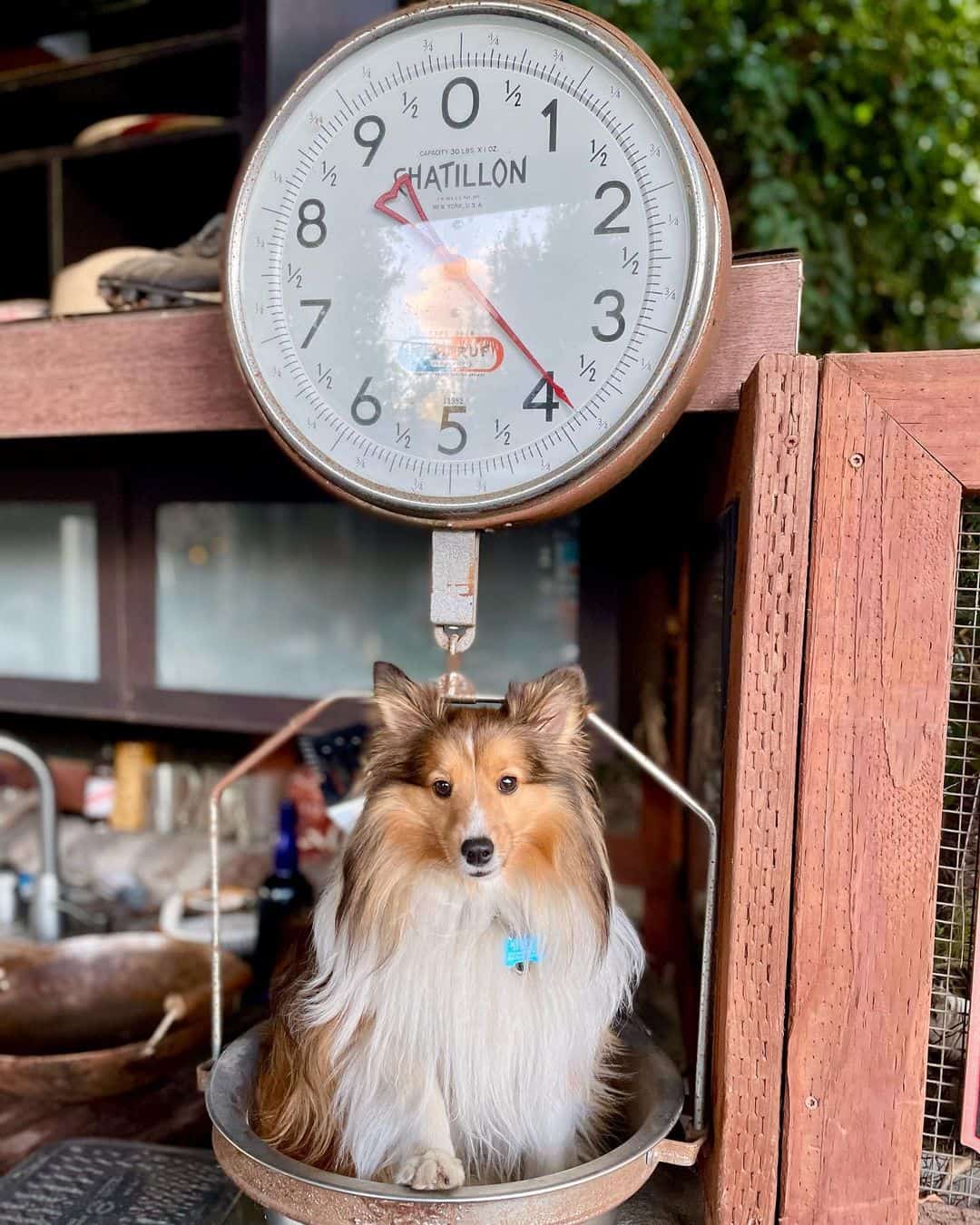
You may be familiar with the notion that all of the miniature dog breeds are actually nothing but the runts of the litter of dog breeds crossed.
A Shetland Sheepdog or Shetland Sheepdog hybrid that has been bred to be significantly smaller (teacup or toy size) than typical is known as a miniature Sheltie.
Miniature Shelties are probably intelligent, active, and herding-inclined, much like their larger cousins – the rough Collies.
Origins Of The Shetland Sheepdog In The Size S
Shetland Sheepdogs, sometimes known as Shelties, are relatively new to the realm of purebred canines. The Shetland Islands in Scotland were the breed’s original home, and it was initially recognized in Lerwick, in 1908, and by the Scottish Shetland Sheepdog Association in 1909.
Following that, in March 1909, the UKC (English Kennel Club) acknowledged both of these registrations and the breed.
As a Shetland Collie, when first registered in Scotland, the name was altered to Shetland Sheepdog before October 1909 because of opposition from Collie enthusiasts.
As early as 1844, a traveler to the islands wrote an article detailing the dogs. The Sheltie has also been referred to as the Lilliputian Collie, the Toonie Dog, the Peerie Dog, the Fairy Dog, and the Miniature Collie.
A group of tiny islands subjected to the whims of the sea as well as the north winds make up the Shetland Islands throughout the North Atlantic.
They have minimal flora, and are rocky and rough. Along with some of the native creatures, such as the Shetland Pony as well as the Shetland Sheepdog, the inhabitants of the islands are tough and unforgiving.
It has long been hypothesized that the Scotch Collie, a King Charles Spaniel, the first Pomeranian, various dogs native to the islands, and a Northern Spitz-type dog imported from Scandinavia mostly by early explorers all had an influence on the development of this breed.
The Sheltie is a breed that is currently found in the Pastoral Group in the UK, and the Herding Group throughout the USA. The breed was developed as a general-purpose farm dog.
Nowadays, the breed’s propensity to bark is frequently seen as a weakness. Whatever their duties or tasks, these early Shelties had to work to pay their way because the Shetlanders could not manage to keep any dog as a pet.
What Does A Mini Shetland Sheepdog Look Like?
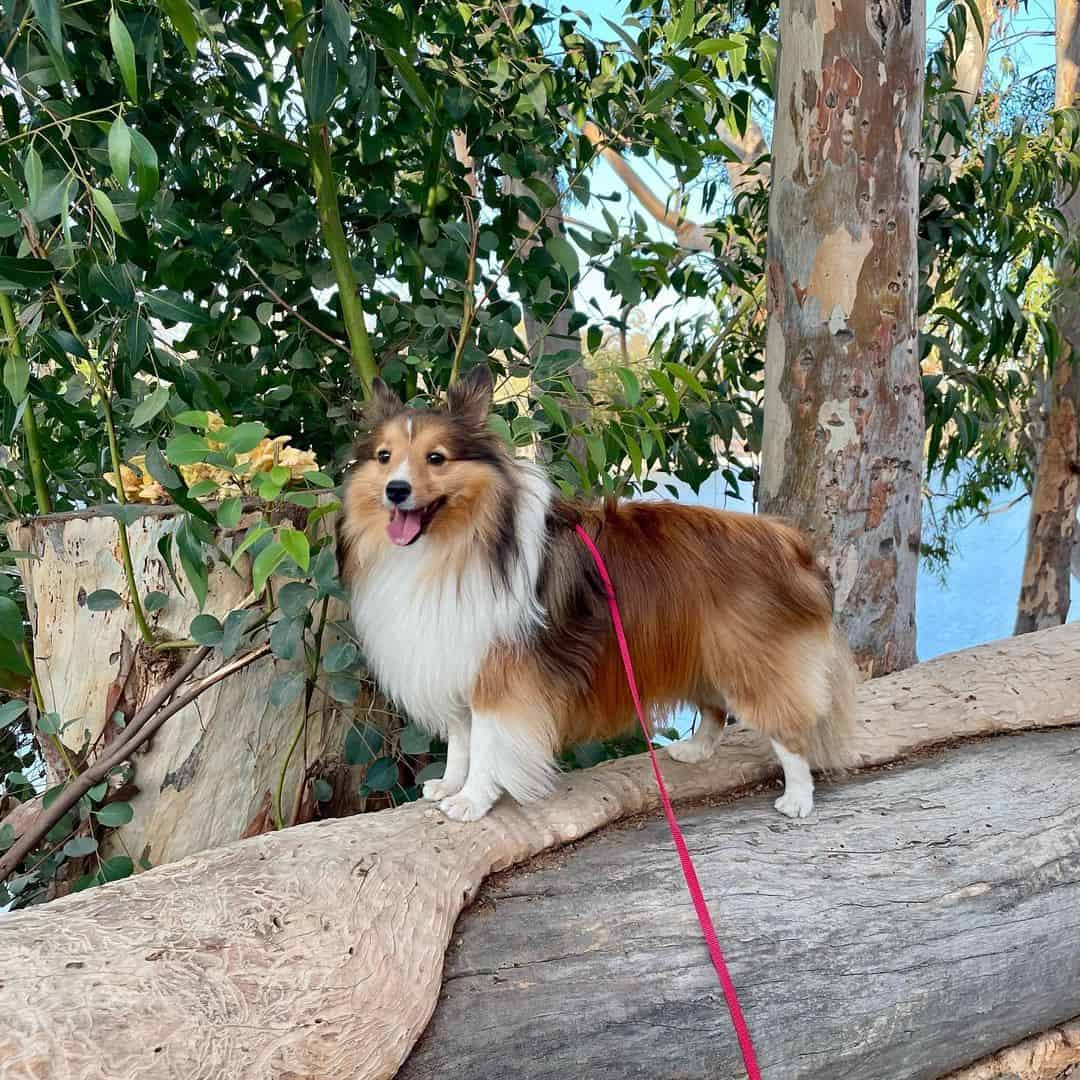
Their thick undercoat, and lengthy, rough coat appears in black, light blue merle, sable merle, and sable featuring white markings.
Shelties have the appearance of a Collie in teacup or toy size due to their coat, broad, wedge-shaped head, short, three-quarter upright ears, and strong, level-backed torso.
Shelties are intelligent, energetic, and successful in manners, jumping, and herding events. They are also simple to teach.
Smaller livestock are better suited for a herding dog. Rather than purchasing a full-sized Shetland Sheepdog, a poultry farmer may profit from acquiring and raising a small Sheltie.
These will be situated at ground level alongside hens as well as other small animals that have smaller jaws.
A smaller dog could also pursue wandering livestock in tight spaces by herding them. Owning a small-sized Sheltie will save you a ton of time grooming because of the breed’s thick, long, and fluffy double coat.
But, before choosing a small Sheltie, there are other things to think about.
What Is The Average Size Of A Mini Sheltie?
Miniature dogs are simple to handle because of their diminutive size. They use fewer calories, making feeding them less expensive. Additionally, transporting and handling miniature dogs is simpler.
Let’s be honest… every dog breed of miniature size is adorable since it stays puppy-sized forever. One major factor driving consumers to purchase tiny versions of their preferred breeds is the cuteness aspect.
The Toy Sheltie Club of America defines a miniature Sheltie as any example of this dog breed that is shorter than 13 inches at the shoulders (the withers) (a.k.a., toy size).
They will be no more than 12 to 24 pounds, making them also the perfect lap dogs when they are tired enough to lay down.
Are These Dogs Dwarfs Or Runts Of The Litter?
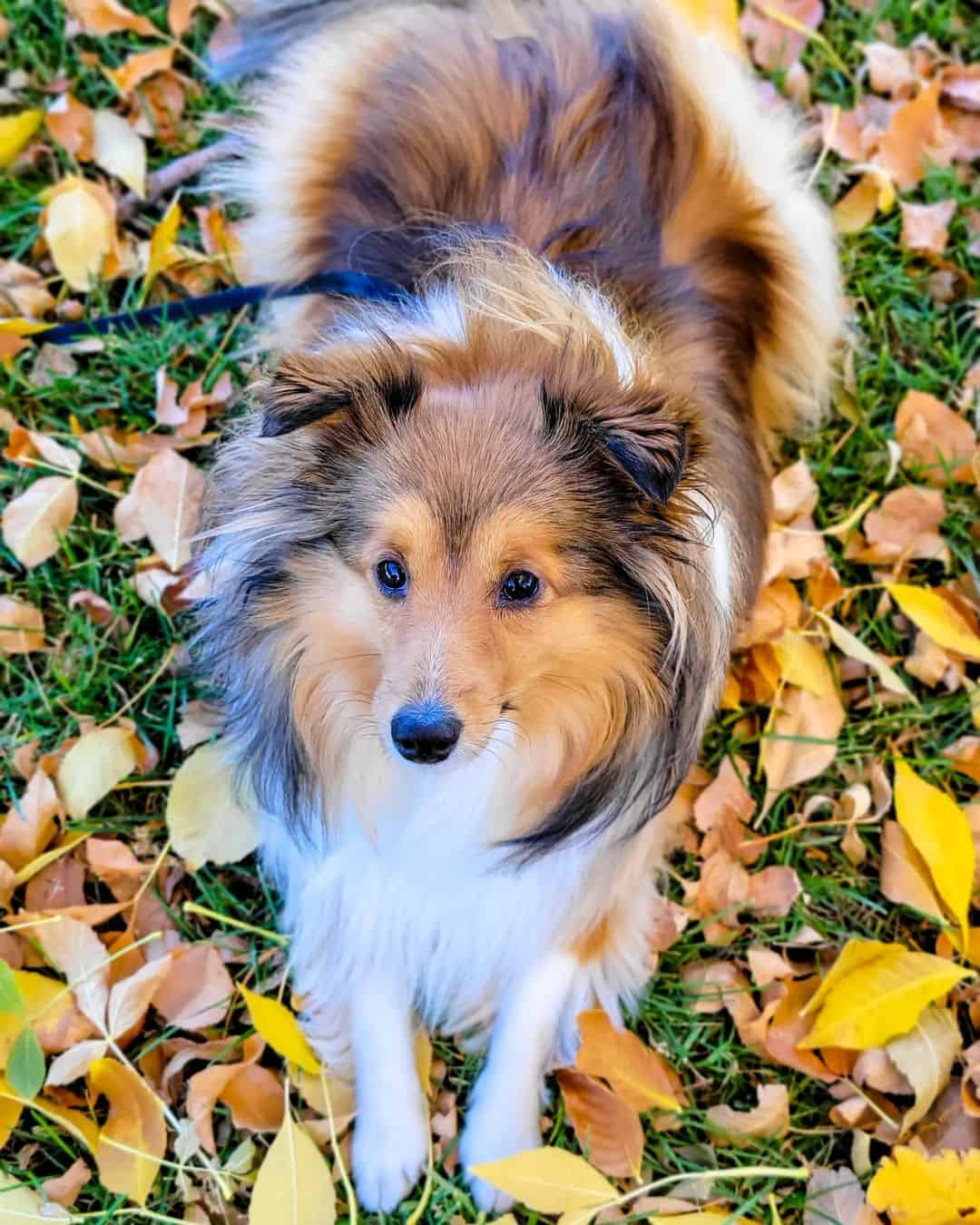
There are a few perspectives regarding this notion, however, the one revolving around the runts of the litter is the most probable.
Dwarfism is another disorder that has been connected to miniature-sized dog breeds recently by genetic engineers.
Let’s dig more deeply into these topics!
Dwarfism And The Mini Sheltie
Achondroplasia, often known as dwarfism, is a disorder of the cartilage and the bones during development. It results in a dwarf dogs’ blatantly short limbs.
The Veterinary Medical Agency’s 2011 handbook states that Shelties can contain the dwarfism gene, albeit not all dogs of this breed do.
Crossing a Sheltie with a dog that already has the dwarfism gene present in all of its members, such as a Dachshund or a Basset Hound, is another option to introduce the gene. These two breeds have similar characteristics, including a long back, short legs, and a huge head.
According to a 2015 study, dogs with dwarfism can experience excruciating skeletal problems. Their vertebrae (spinal bones) are prone to illness and sliding disks, which might immobilize dogs in severe cases.
Any gene pool that dwarfism is introduced to will probably produce some progeny, with skeletal as well as neurological anomalies. Such procedures to treat the problems are very pricey.
Two Runts Make A Mini Shetland Sheepdog
There is no other way to achieve the teacup breed standard than to mate two runts of the litter.
These ones are usually the smallest ones of the litter, and sadly, the weakest, too. But, that doesn’t stop them from being the most desirable ones because of their size.
The rationale supporting breeding runts is so that they would retain their small stature in their descendants while excluding any traits from other dog breeds. Meanwhile, runts also represent the weakest, and occasionally underdeveloped of the litter.
They may be undersized due to inherited health issues, and their immune system is more susceptible to being underdeveloped. Continually breeding from one runt after another will produce small, sickly dogs.
When breeding such small dogs, it is highly important to do DNA tests on both of the parents as well as to the whole litter since they are prone to more diseases than the regular-sized Shetland Sheepdogs.
What you should also note when buying a Sheepdog puppy of mini size is to get as far away as you can from puppy mills. Sheltie puppies are prone to being bred in puppy mills since places such as these do not care for their breeding methods.
Choosing a responsible breeder, meeting him, and meeting the parent dogs and the puppies in person before purchasing will definitely give you peace of mind. Get you a Sheltie breeder who is an experienced dog breeder.
What Kind Of Personality Does The Mini Shetland Sheepdog Have?
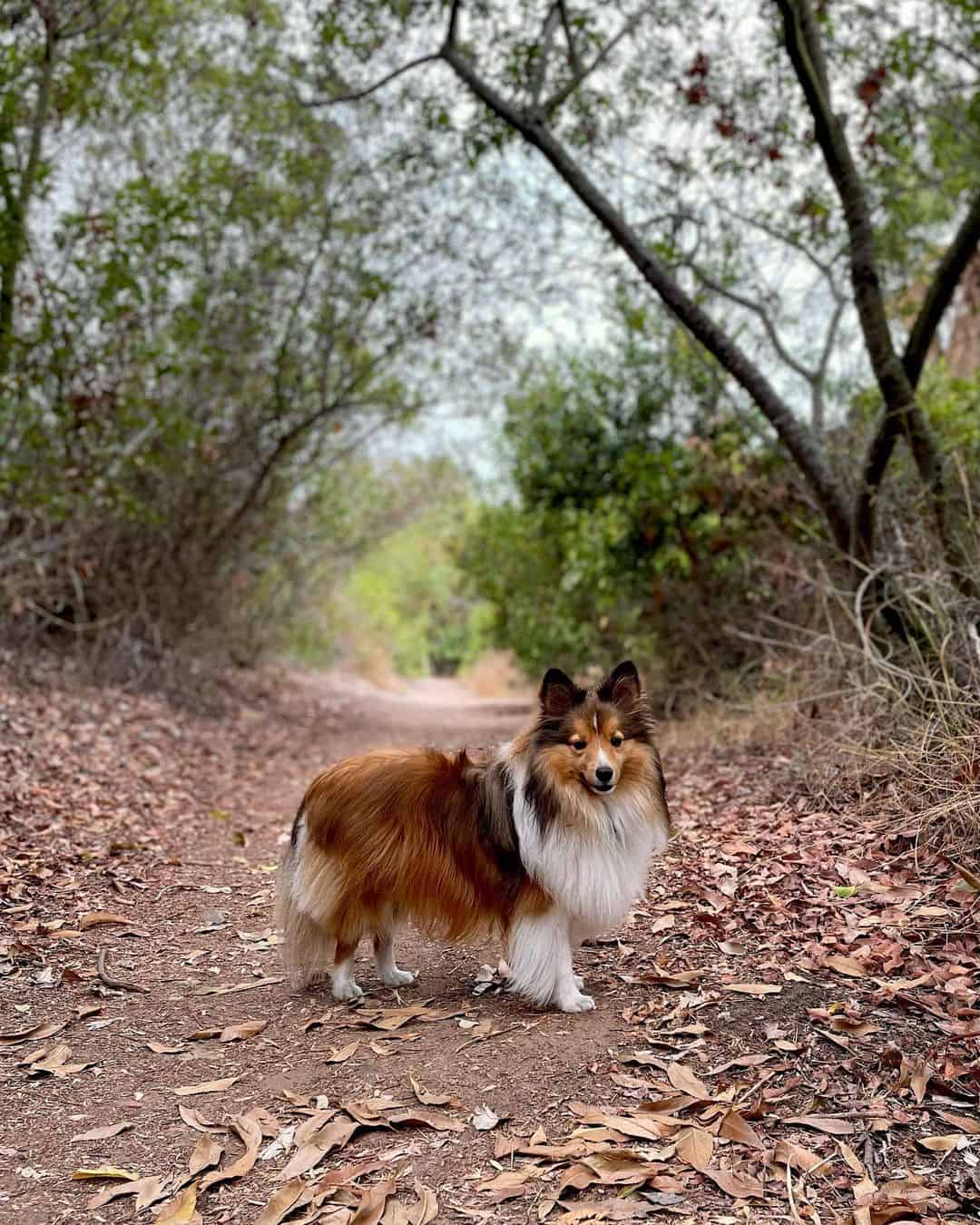
Shetland Sheepdogs are renowned for having a kind, pleasant temperament. They are also affectionate and playful, which have all contributed to their popularity as household pets.
Shelties are intelligent and eager to please people, so it should come as no surprise that they do well in obedience training, according to breed experts. They are herding dogs, and they are extremely athletic, thanks to that.
Shelties are wary of unfamiliar people. As a consequence, they make very good watchdogs, and are inclined to bark loudly when they see an outsider.
When stimulated, they also bark. Although they are not often violent, some Shelties may nibble at strangers whether they are adults or kids. Some of them could be wary of strangers.
Even with instruction, some natural tendencies can be very difficult to control. Strong inherent herding instincts have an impact on the Shetland Sheepdog‘s temperament.
Shelties have a reputation for wanting to catch moving objects. This includes bicycles, cars, and even small, moving creatures and kids. This could be very dangerous if your Sheltie attempts to chase moving cars! If you have small kids or tiny animals in your family, this may also be an issue.
Shetland Sheepdogs sometimes even nip at your feet when ‘herding,’ despite the fact that they have no malice in their actions.
However, by walking your Sheltie on a collar outside, you can attempt to restrain these inclinations. This may also prevent the dog from pursuing automobiles and potentially harming itself.
Is The Mini Shetland Sheepdog A Good Family Pet?
Compared to other breed types, herding dogs such as the Sheltie prefer playtime and activity. This is excellent if you want a dog that enjoys playing and engaging with its owner.
Nothing makes your Shetland Sheepdog happier than to romp around and enjoy itself with you. When they’re enjoying this activity and playing, this breed is the happiest!
However, this isn’t the best option if you’re searching for a dog that likes to express its affection by curling up on the couch with you all day.
Although the Shetland Sheepdog makes a wonderful family pet, how sociable is it with strangers? Shelties and other herding breeds can be wary of strangers.
Therefore, although your Sheltie will probably develop deep relationships with its immediate family, it might not be the warmest dog in public.
Due to a scared reaction, the Shetland Sheepdog does have a greater-than-average risk of hostility to newcomers.
Start socializing your Shetland Sheepdog as soon as possible to ensure that it is comfortable among strangers.
The more new situations you can expose your mini Sheltie puppy to while it is still young will make it more comfortable and more sociable among strangers as it gets older.
Is The Mini Shetland Sheepdog A Healthy Dog Breed?
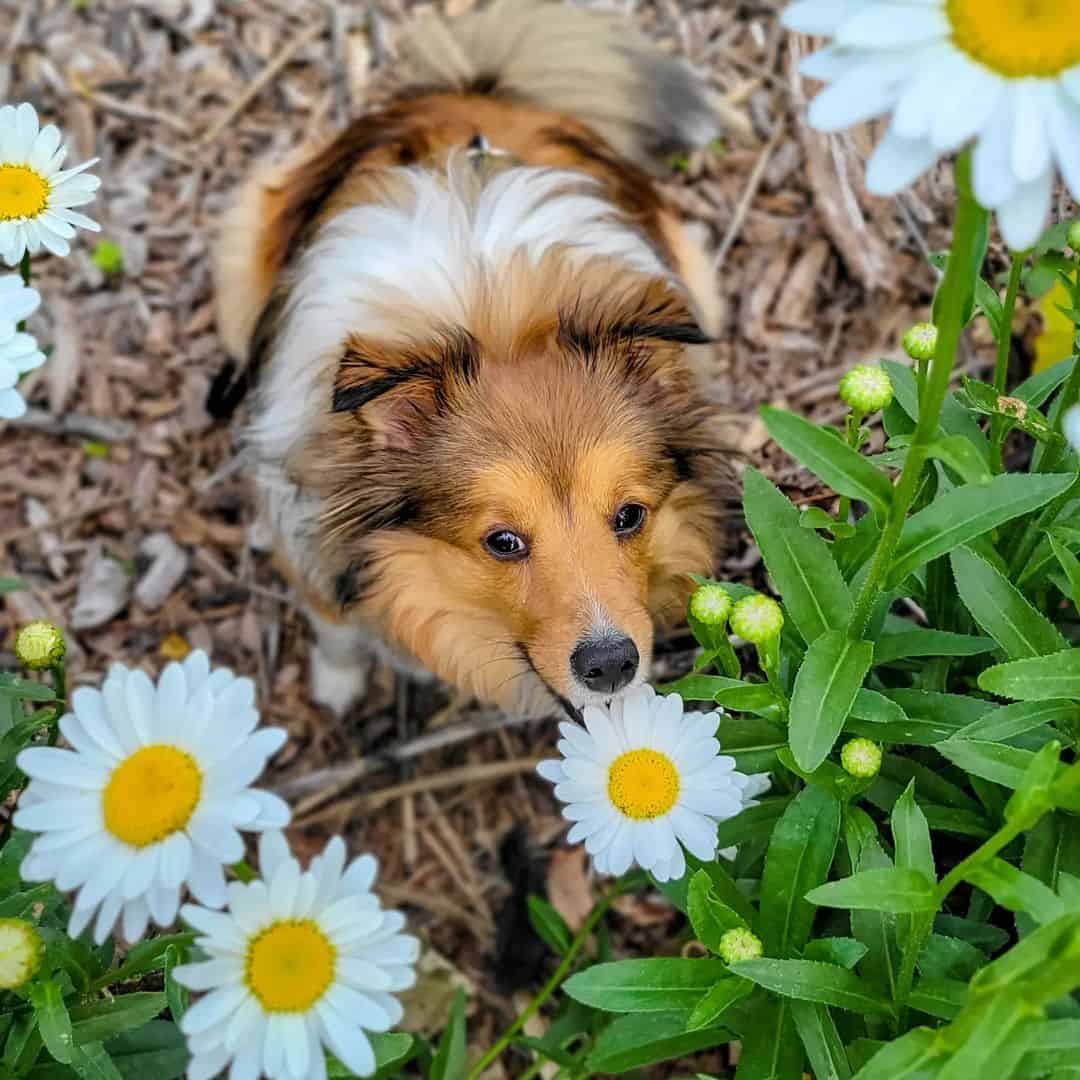
Mini Shetland Sheepdogs are typically healthy animals, and responsible breeders check their stock for disorders like Von Willebrand’s disease (VWD), gallbladder mucoceles, seizures, thyroid issues, hip dysplasia, eye diseases, and dermatomyositis (Sheltie skin syndrome).
The American Shetland Sheepdog Association (the breed’s official parent group) recommends that breeding stock undergo basic health testing in order to detect numerous possibly heritable illnesses (ASSA).
How Long Do Miniature Shelties Live?
Keeping in mind all of the possible health problems that Miniature Shelties may have, their life expectancy won’t be as long as you might expect.
The usual life expectancy of the mini Shetland Sheepdog would be from 11 to 14 years. That lifespan may be longer, or even shorter, depending on various factors.
Some of those factors are the genetic makeup of the parent dogs, as well as the way you take care of your dog.
Providing regular vet checks, high-quality dog food, and regular exercise (provided that your dog does not suffer from some illness) can make the lifespan of your dog longer.
Possible Health Problems Of Your Mini Shetland Sheepdog
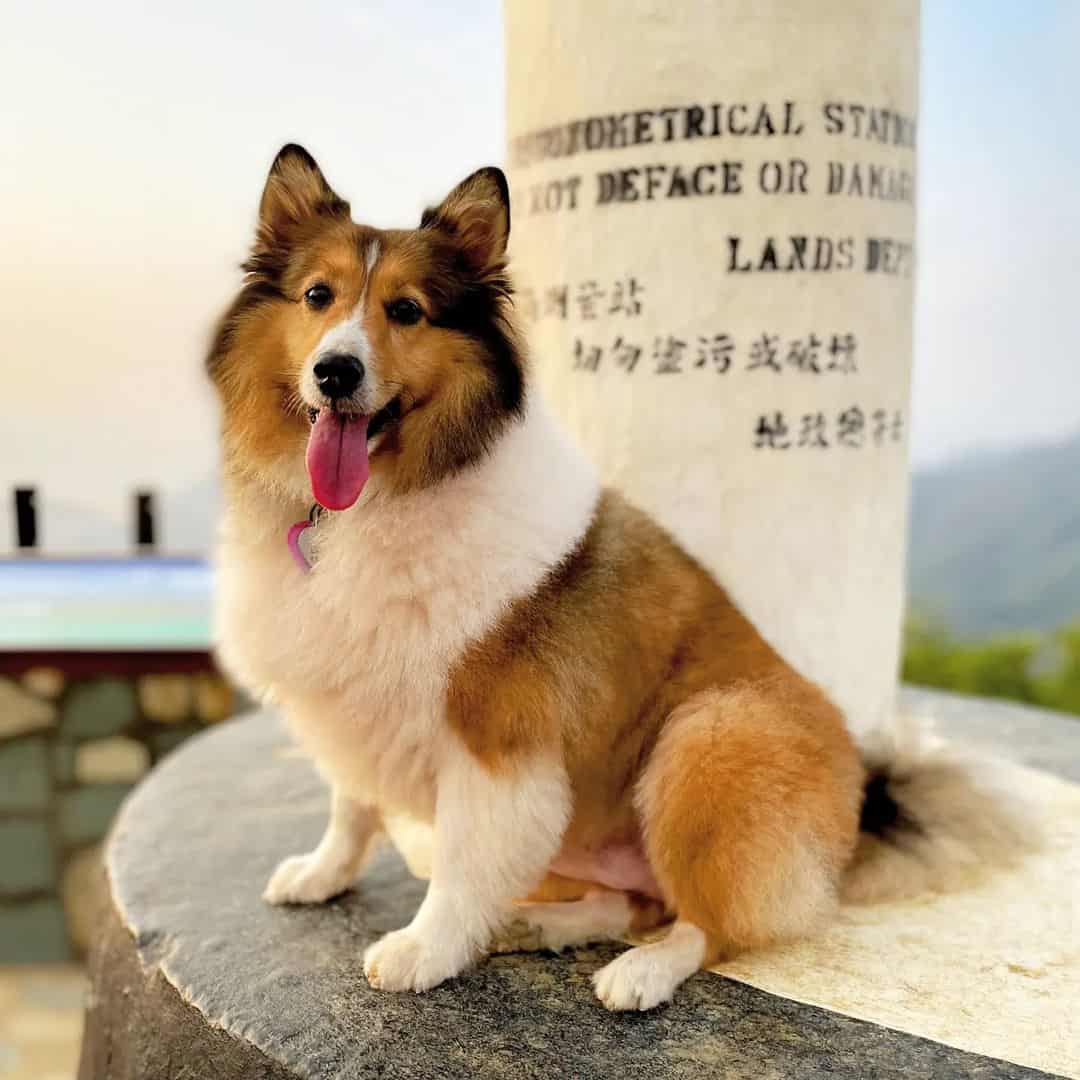
Smaller issues such as patellar luxation, dermatitis, thyroid problems, Legg-Perthes, dog hip dysplasia, anemia, cataracts, Collie eye abnormality, as well as progressive retinal atrophy, in addition to more serious ones, like dermatomyositis, might affect Mini Shetland Shepherds.
Epilepsy in canines, Von Willebrand disease, patent ductus arteriosus (PDA), and hearing problems can occasionally affect this breed.
DNA testing for the thyroid, hip, and eyes is indicated. Ivermectin may not be tolerated by some. Merles should never be bred with other merles since homozygous merles can cause death, or at least compromise their wellbeing.
1. Von Willebrand’s Disease
The most prevalent inherited bleeding illness in both people and canines is Von Willebrand’s disease. Cats rarely contract this illness.
This illness prevents the dog’s blood from clotting normally, which causes continued bleeding, especially following surgery or trauma. Over more than 50 distinct dog breeds have been affected by this illness, sadly.
The condition is brought on by a hereditary gene mutation that reduces the amount or function of a blood protein called the Von Willebrand factor.
Whenever an animal is hurt, platelet-containing cells adhere to the injured tissue to create a clot and stop the bleeding. A lack of the Von Willebrand factor might cause abnormal bleeding since it is necessary for the platelets to adhere to one another.
Dog owners may not realize that a dog has this illness until the animal bleeds for an extended period of time following surgery or trauma.
In extreme circumstances, even without damage, dogs might bleed from the snout, from the gums, from the vagina, or even have bloody pee or feces.
Breeds with a high propensity for this disease may require pet owners to test their puppies. The level of the Von Willebrand factor found in a blood sample can be checked via blood work.
For a limited number of breeds, a DNA analysis is also possible, and it only requires a quick mouth swab.
2. Patent Ductus Arteriosus
Constriction of the muscle allows blood to flow, eventually leading to left-sided cardiovascular disease and/or widespread heart failure. It is inherited among several dogs.
The common left-to-right PDA is susceptible to open surgery or microsurgical techniques. The optimal patient for PDA occlusion surgery is a dog that is young, light, and has few heart alterations. Different dissect and suture-passing techniques are used in a wide range of surgical procedures.
The most potentially serious consequence during dissecting is intraoperative bleeding, which poses a serious risk to life.
It has been asserted that less invasive procedures, such as intravascular coiling and thoracoscopic ligation have reduced morbidity and mortality rates than open procedures.
Most patients experience reorganization of the cardiac tissues once the PDA is blocked, which leads to a favorable long-term prognosis. Even though they are uncommon, late complications, including persistent flow and recanalization can have clinically-significant effects.
3. Deafness
Congenital (existing at birth) or acquired deafness can occur due to an infection, trauma, or cochlea deterioration.
Deafness that is apparent at birth might be hereditary or occur from harm due to toxins or viruses. In both dogs and other animals, the fur colors, ‘merle’ as well as ‘white’, are linked to birth-deafness.
The outer ear canal could become blocked as a result of persistent inflammatory process or heavy ear wax, leading to acquired deafness.
Infection of the mid or inner ear, or a damaged ear drum, can also cause it. Once these conditions are treated, hearing typically returns.
Local anesthetics, drugs harmful to the ear, tumors affecting the ear or brainstem, degeneration of the cochlea in older dogs, and trauma of the temporal bone which surrounds the inner ear are all permanent causes of acquired deafness.
Loud noises (such as gunfire) are other potential causes. In some of these cases, hearing loss or deafness in one ear, or both, is possible. In older dogs, cochlea degeneration is the most frequent cause of acquired deafness.
Taking Care Of Your Miniature Sheltie
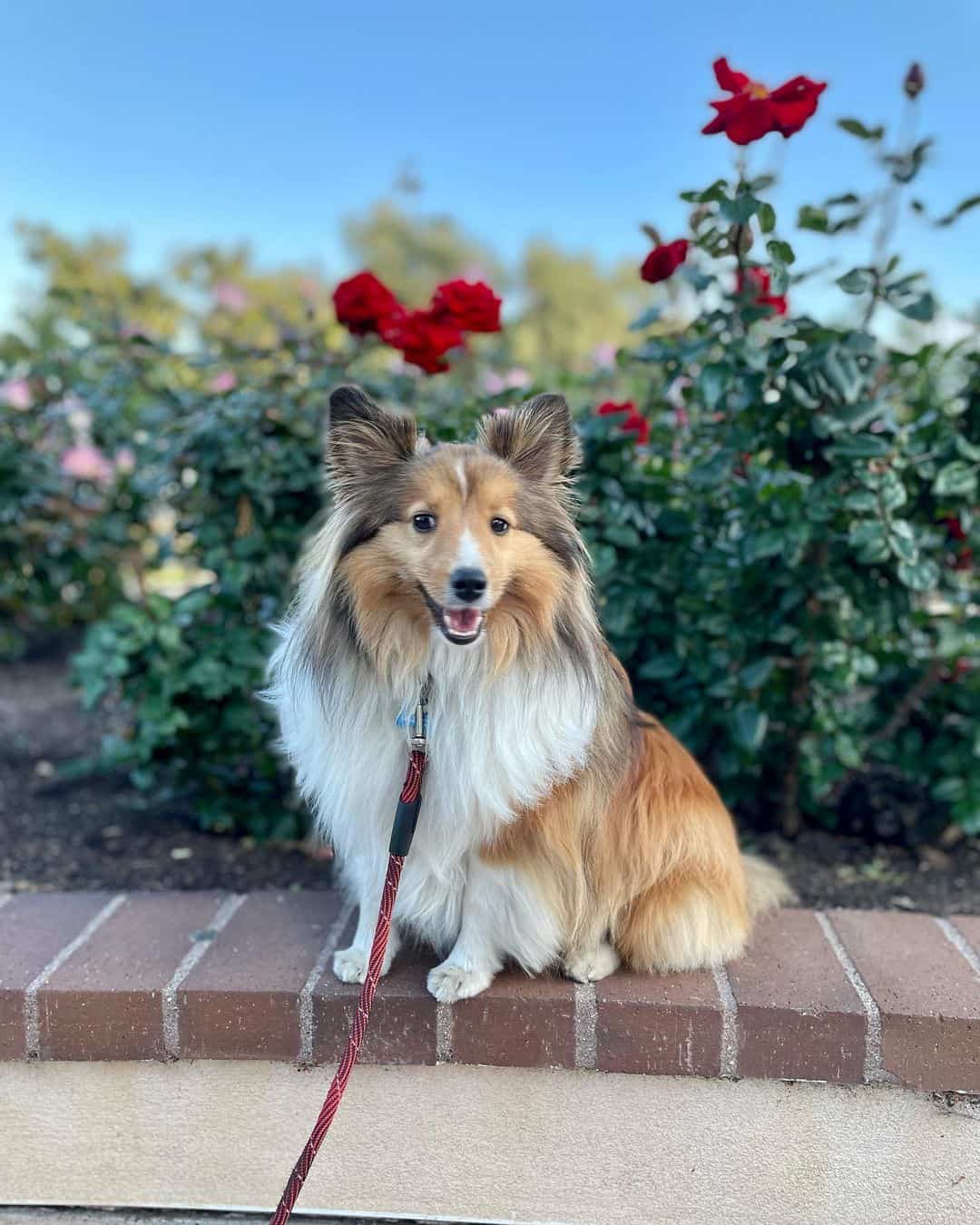
Because they are a lively breed, Shelties require daily exercise that goes beyond a quick stroll around the block. Shelties shed a lot, and they require routine biweekly maintenance. Because of this, we cannot classify them as low-maintenance dogs.
If you’re seeking for a dog that is really laid back, not overly sensitive, low maintenance, averagely intelligent, and doesn’t care whether you’re going or coming home, then a Sheltie will be (to put it mildly) completely infuriating.
Grooming
The Sheltie sheds a lot because of its thick double coat. Whereas the undercoat is shorter and extremely dense, the outside coat is composed of long, stiff, and rough hair.
To assist with this, remove a minimum of some of the loose hair before it spreads throughout the house. Owners should be willing to brush the coat once a week, and more frequently throughout the shedding period.
Make sure to look for mats in the “pants” underneath the tail, behind the ears, and on every front leg’s elbow.
Since the dog’s coat shields against both cold and heat, in addition to sunburn, shaving is not advised. Rarely do you need to give your Sheltie a bath; however, regular nail trimming is necessary.
Feeding
The Shetland Sheepdog will thrive on premium dog food, whether it is made professionally or at home under the direction and agreement of your veterinarian.
Any diet must be suitable for the pet’s age. It’s important to keep an eye on your dog’s weight and calorie intake because some breeds are prone to obesity. Treats may be a valuable training tool, but offering them in excess might lead to obesity.
Discover which foods fit the bill for canine consumption and which don’t. Should you have any worries regarding your dog’s health or diet, consult your veterinarian. Fresh water that is clean should always be accessible.
Training, Exercise, And Socialization
Shelties are athletic and energetic, and while they require some exercise, they can easily fit into their family’s lifestyle. As long as owners give their dogs enough exercise, they adapt well to living in cities.
They like going on trips with their friends who will challenge both their body and their mind. Shelties thrive as therapy dogs, and succeed in a variety of dog sports, such as agility, jumping, herding, and tracking.
Puppy training sessions and early socialization are advised for all breeds. The Sheltie is extremely bright, trainable, and eager to please. When given a minimum of basic training, he will realize his full capabilities as your best friend.
Mini Shelties may be very ‘talkative’ and use barking to convey their happiness; therefore, owners need to be ready to train the dog to cease barking when not necessary.
Mini Shelties enjoy chasing moving objects, especially cars, which is typical of other herding breeds. For this reason, they should have a secure yard, and be taken on walks while wearing a collar and leash.
Their trainability is unquestionable since they are a distant cousin of the rough Collie (the Border Collie). Their herding instinct has to either be trained or naturally used on a farm.
What Does The AKC Say About The Mini Sheltie?

These adorable tiny furballs, also called Toy Shelties, Mini Shelties, as well as Miniature Shelties, are rare because they aren’t an AKC-recognized canine breed.
Shetland Sheepdogs should measure 13 to 16 inches at the shoulders, which are the tallest peaks on the dog’s back, just above the shoulders, in order to compete in conformity competitions in the U.S.
Why? Because these guidelines provide breeders with a desired form to strive towards. Without stringent guidelines for behavior, movement, and appearance, the beloved Shetland Sheepdog breed would quickly change into new varieties.
Mini Sheltie breeders, however, contend that the breed was previously smaller and slimmer, and that shrinking has restored the breed to its original Shetland Sheepdog shape.
There is heated debate over this concept, and tension exists between the opposing sides. Notably, professional Mini Breeders aim for all the same characteristics as standard Sheltie champions, with the exception of height.
Expert Mini Sheltie breeders would like the American Kennel Club to designate a new canine breed: the Toy Sheltie, instead of altering or expanding the current standard.
There seems to be multiple breed standards for other breeds, including the Toy, Miniature, and Standard Poodle; therefore, there is a foundation for this. This is the reason why Mini breeders still create the tiny dog today.
The AKC has rejected this way of thinking as of 2022. Therefore, there aren’t many Mini Sheltie puppies born each year. Despite this, there is a big market for Miniature Shelties in the pet industry, which brings us to the sad and frustrating reality of puppy mills.
So, Do Miniature Shelties Make Good Pets?
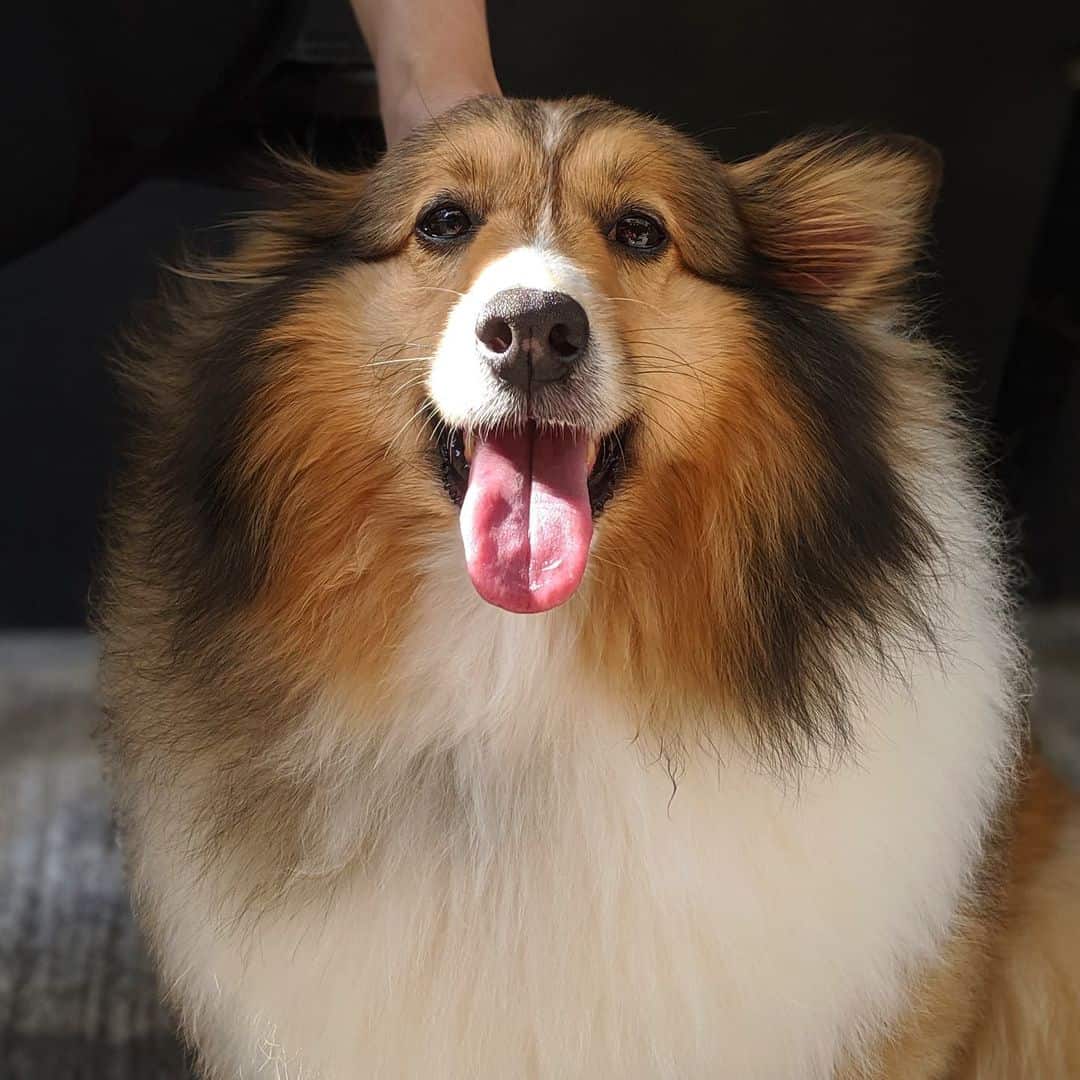
Did the breeder of your dog use ethical breeding practices? If yes, then there is a considerable possibility that your mini Shetland sheepdog will be content and healthy. The best course of action is to bring your new dog (or puppy) to the veterinarian for a thorough examination.
However, if you decide upon adopting from a Sheltie rescue, you will be doing a great thing morally by providing a homeless dog with a loving home.
Despite their diminutive stature, miniature Shelties still need a lot of activity, just like their larger counterparts. A small Sheltie will fit in wonderfully with an active metropolitan household or an active rural life.
Exercise your little Sheltie more if it starts being destructive inside. A Sheltie that is properly exercised won’t be able to chew on your furnishings!
You may also consider adopting some Shetland Sheepdog mixes!
